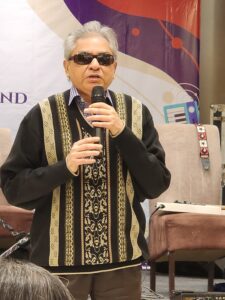“I’ll put my money on the sun and solar energy. What a source of power! I hope we don’t have to wait until oil and coal run out before we tackle that.”
-Frank Bridgers.
The very concept of green architecture was based on the endeavor to find alternative resources for the fossil fuel energy to begin with, resources that are abundant, clean and renewable. Naturally, they first turned to solar energy.
Solar power: A constant source of energy
Solar power is the power that is the power produced using solar energy- the light and heat from the sun. Solar energy is one of the cleanest, renewable energy sources available to us. Presently, it’s the largest energy source for the globe. Despite a head start, solar energy is still being used on a very small scale, primarily because of its great initial cost. It’s use is now gradually growing due to technological advancement and subsidies given by the governments on the installation equipment. Europe is currently the leader in solar energy use, followed by China and US. India has made great strides and could soon become the largest producer of solar energy in the world.
Types of solar power
There are basically two categories of solar power technology:
Active solar power
Passive solar power
Active solar technology
This technology is used to directly convert solar energy into another form of useful energy, like electricity or heat. Some of the applications are described below.
- Solar Photovoltaic (PV) energy- It directly converts sun’s light into energy by using solar PV panels. This system has a very widespread use. Smaller panels may be used on roof tops of houses or public and private building complexes to supply electricity or heat for their use. On the other hand, larger panels, fitted in a different way, are installed in solar power stations or solar parks to generate electricity that is then supplied to facilities.
- Solar heating and cooling- Sun’s thermal energy is used to provide hot water, heating and cooling, and pool heating. While solar PV systems produce electricity, solar water heating collectors produce heat. Different amounts of heat can be produced by different assemblies.
- Concentrating Solar Power (CSP)- The system consists of mirrors and lenses to concentrate sun’s light. This concentrated light is used to produce high temperatures which drive steam turbines or engines to generate electricity. Used on a large scale, this technology is most cost-effective. CSP plants are thus used as energy suppliers to utilities.
Passive solar technology
This technology makes use of sun’s light and heat without using any mechanical or electrical devices. This method is commonly known as daylighting, that allows for the walls, windows and floors of buildings to collect the sun’s energy during the winter months while rejecting it during the summer months. Window placement, the use of thermal mass and appropriate sun orientation are some of the key aspects of passive solar design, aspects designers just cannot afford to overlook while designing green buildings. Open interior spaces, for example, would allow for a deeper penetration of daylight into the building. A thermal mass, a solid of liquid material, stores warmth or coolness until it is needed within a space.
Advantages of solar power
- Energy independence- Solar power allows us to reduce the use of fast depleting fossil fuel resources. These systems can be installed independently on any site and have environmentally friendly features.
- Vast resource- Solar energy is not just renewable, there is an unlimited quantity available in the form of sun’s infinite quantities of light and heat.
- Clean power- Solar panels do not emit any greenhouse gases during production, installation or use. The energy produced is thus clean and doesn’t cause any pollution.
- Expandable- Solar PV panels are modular, so expanding the capacity or transporting them is easy.
- No cost after installation- Solar power is renewable. Once the basic equipment is installed, solar energy is available at no cost.
Disadvantages of solar power
- High cost- The high initial cost of solar energy equipment has so far limited its use. Efforts are on to make it cheaper by providing subsidies etc. New technology is also helping reduce the cost.
- Fluctuation of energy- One main problem with solar energy is that solar panels cannot produce the same amount of energy throughout the year. The absorption of energy depends on time of the year and location of the site on earth’s surface. Less power will be produced during winter and wet seasons as compared to summer and dry seasons.
The warning signals are loud and clear, time is running out for us. The wild fires, the drying rivers, the melting glaciers, the changing weather patterns; it’s time we wake up from our slumber and embrace the green concept. Mother nature is powerful, she may be able to re-evolve after all the destruction, but humans will in all likelihood be wiped out if steps are not taken to correct the environmental imbalance. Using solar power is one of the first steps we must take without delay.
We will keep discussing this important topic in our next posts, stay connected!
Sources:
https://cicconstruction.com › Blog
https://www.dexma.com › blog-en › how-efficient-are-s…
https://arka360.com › ros › integrating-solar-energy-wit…
https://www.sciencedirect.com › article › abs › pii
ABOUT THE AUTHOR

Sandeep Singh is an architect from IIT Roorkee.
Ten years after graduating, he lost his vision to genetic Diabetes.
He reinvented his career and turned writer.
He has authored two fiction books and writes blogs on
Architecture, Outsourcing, Safety and a variety of other
subjects for different organizations. He also chairs and runs two NGOs
